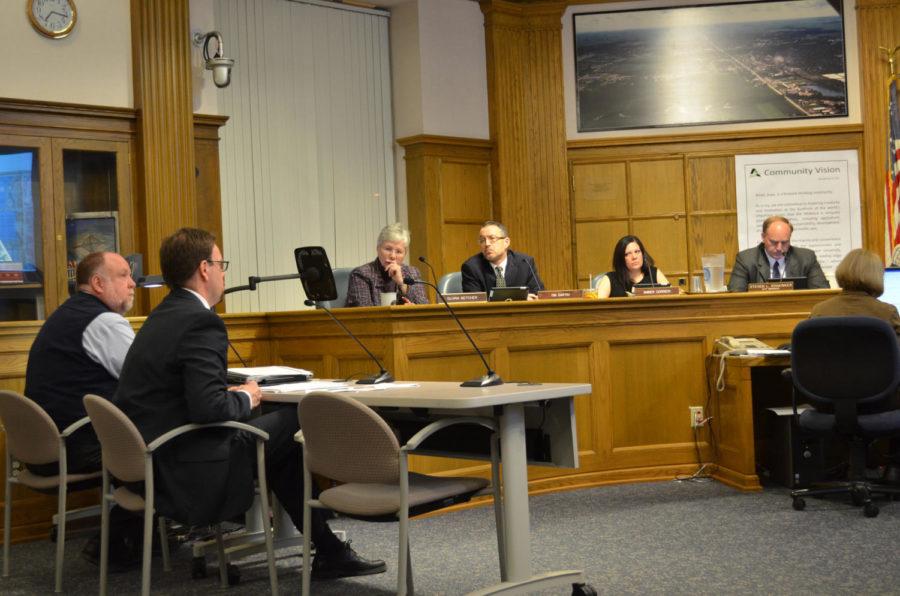CyRide among largest discussion with high density housing at City Council
Katy Klopfenstein/Iowa State Daily
With the increase of high-density housing developments and 2.9 million riders of CyRide in nine years, Ames City Council discussed how to assure a long-term viability to the transit system at the meeting Jan. 13.
January 14, 2015
In the first City Council meeting of the year, the council discussed the implementation of a residential high-density evaluation tool for the Ames community.
High-density housing, which mainly consists of housing in apartment buildings and complexes, has been an issue within the city since mid-November. The set of criteria used to understand what high-density housing will be classified as includes six steps:
- Location and surroundings
- Site features
- Housing types and design
- Transportation
- Public utilities and services
- Investment and catalyst
For ISU students, what is determined as high-density housing could determine where students can live after undeveloped parts of the city develop.
The CyRide board president, John Haila, said his main concern was the increased enrollment pushing developers to look for more and more high density housing. This is pushing development to the outskirts of the city, he said.
“Ridership is up 70 percent, 4.1 to 7 million this year,” Haila said. “We’re buying used buses more so now than ever and with the pressure on the system because of the students. We have no problem with them coming, [but] there is a pressure.”
Haila said as there becomes more high-density housing, students will expect a ride, no matter where they are. Haila’s statement sparked even further discussion about CyRide and its transit system throughout the night.
City Council Member At-Large Matthew Goodman said “the distance from Iowa State has to be a piece” of the conversation. While some members remained adamant about how CyRide would play out as a factor in high-density housing development, some council members, such as Peter Orazem, keyed in on other details.
“We don’t have good understanding of what the composition is in these buildings,” Orazem said. “We assume these are all students but that may not be the case.”
Orazem said finding out what the demographics were in each high-density building would help better forecast Land Use Policy Plan (LUPP) amendments in the future.
The Ames City Council also discussed a hydraulic analysis of Riverside Manor.
The city previously contracted with HR Green for a third-party hydraulic analysis. The HDR model results showed increases in the water level of a 100-year flood upstream. Now, the city was provided with four options for a hydraulic analysis.
It was discussed whether to continue with the 100-year flood evaluation model, or if it would be a better option to have an evaluation model for 500-year floods, considering there have been two 500-year floods since 1993.
In order for the City of Ames to go with the 500-year model, Kelly Diekmann, director of Planning and Housing for the City of Ames, suggested it will cost around $3,500 to fund the project and consultation.
“Peoples’ homes and lives are worth more than $3,500,” said council member Gloria Betcher.
It was moved that Diekmann would look into how much money the 500-year flood evaluation model would cost the city, and it would be further discussed during the next scheduled meeting Jan. 24.







